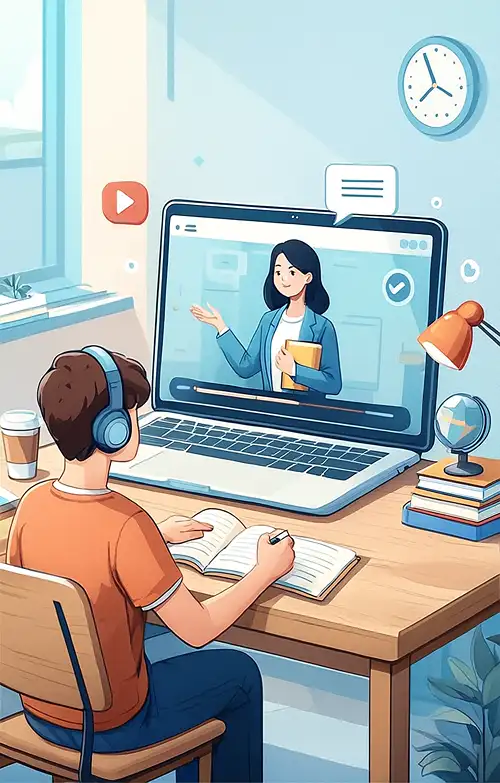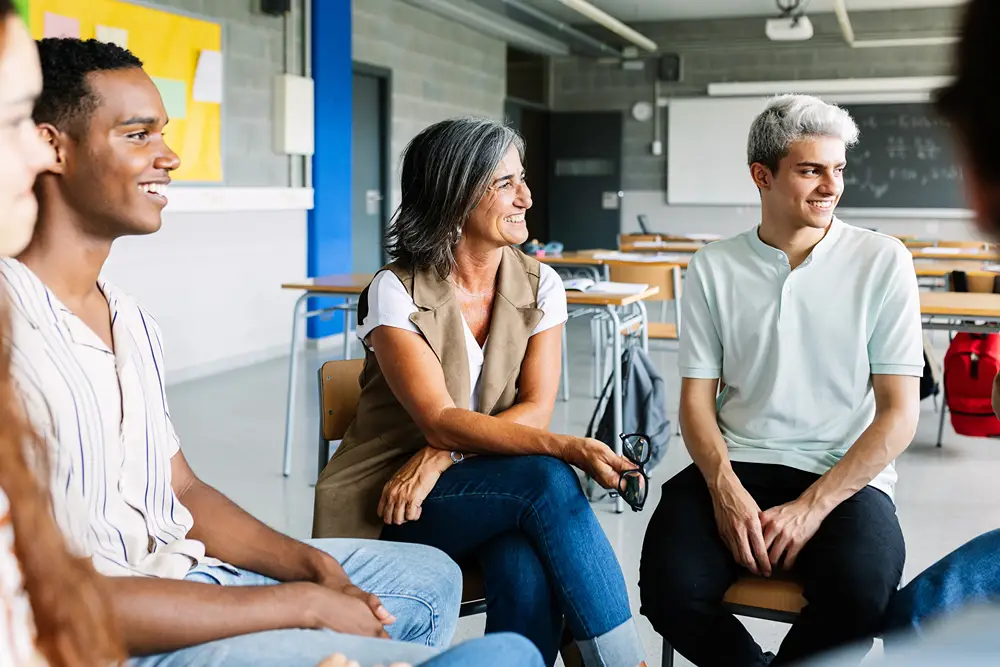Overcoming the Biggest Hurdles in Online Learning
Online learning has evolved from a secondary alternative to a global academic mainstay, reshaping how institutions deliver education and how students absorb knowledge. What once struggled to gain credibility is now trusted by elite universities, language institutes, specialized training schools, and long-form academic programs worldwide.
The flexibility it offers has unlocked learning opportunities for students who may not have access to traditional classroom environments due to location, finances, or scheduling constraints. However, despite its rapid adoption, online learning has introduced a unique set of challenges that impact student engagement, comprehension, accountability, and long-term academic performance.
For many learners, the transition from structured physical classrooms to virtual learning environments requires a fundamental mindset shift. Mastering this format takes more than a laptop and login credentials; it demands adaptation, discipline, and intentional learning habits. Educational organizations, particularly those offering high-level preparatory programs, understand that students need more than digital content to thrive. Successful online learning requires intentional ecosystem design, human support, structured mentoring, cognitive pacing strategies, and a curriculum built not just for access, but for student success.
Schools serving ambitious learners must recreate the academic rigor, intellectual curiosity, and mentorship culture traditionally found in brick-and-mortar institutions. This is especially important for globally recognized academic brands that prepare students for future university pathways, leadership roles, or specialized disciplines. Online learning is not just a content delivery mechanism but an immersive training ground for analytical thinking, discipline, and real-world problem-solving. The most successful programs go beyond teaching lessons and instead build learning environments that refine student potential.
Maintaining Motivation Without a Physical Classroom
One of the most cited struggles in remote education is the absence of physical learning environments, which naturally encourage accountability and structure through spatial and social cues. Without a shared physical classroom, students must rely on self-discipline to stay committed, making motivation more effort-dependent than environment-dependent. The most effective programs incorporate live mentorship, structured milestones, and collaborative peer learning to replicate the sense of community that motivates students to perform better.
Many schools now integrate goal tracking dashboards and progress transparency so students can visually measure their pace, growth, and mastery over time. Programs designed with academic excellence in mind have re-engineered motivation by embedding coaching systems rather than leaving students in isolation. This is why programs like an online summer school have reframed remote learning by emphasizing engagement protocols over passive lesson consumption.
Building motivation also requires understanding student psychology, as learners are more persistent when they can connect daily tasks to meaningful long-term objectives. Successful academic institutions now embed future-focused development into daily lesson planning, so students constantly see how coursework connects to career pathways and personal growth. Educators trained in digital pedagogy have shifted from being information deliverers to learning experience designers who architect curiosity, engagement, and self-efficacy.
Elite academic providers build ceremonial milestones, presentation requirements, and intellectual peer challenges to generate academic momentum similar to in-person participation. Motivation is also driven by visibility, which is why successful online programs encourage students to share progress, reflections, and ideas publicly in structured academic forums.
Research from institutions like Stanford University has consistently shown that engagement strategies incorporating active learning and social interaction significantly improve persistence and academic outcomes in digital environments. Ultimately, motivation is most sustainable when academic success is socially celebrated, systematically tracked, and personally meaningful.
Overcoming Digital Distractions and Cognitive Overload
Unlike traditional classrooms, where attention is guided through a controlled environment, online learners often face unfiltered digital exposure that competes aggressively for their focus. Social media, messaging apps, notifications, entertainment platforms, and multitasking create a fragmented attention landscape that can significantly impact learning retention. Cognitive overload occurs when students consume more information than their working memory can process effectively, leading to fatigue, reduced comprehension, and inefficiency.
High-quality online programs redesign lesson delivery with pacing science, splitting complex topics into cognitively digestible units instead of dense, unstructured lectures. Purposefully structured academic systems integrate digital minimalism techniques to train students in attention discipline rather than assigning more content.
Attention management is now a core learning skill, as essential as literacy and numeracy in the digital education era. Schools focused on academic excellence train students to build distraction-resistant systems using structured learning intervals, intentional task switching, and cognitive bandwidth planning. Leading institutions view focus as a measurable skill that can be strengthened through structured academic conditioning. Many programs now incorporate performance-based tools such as scheduled deep concentration cycles, content layering techniques, and knowledge reinforcement checkpoints.
Students can benefit from proven time management techniques like the Pomodoro method that help manage cognitive load while maintaining deep focus through structured 25-minute intervals followed by short breaks. Educators reinforce attention discipline through Socratic dialogue, analytical questioning, and active learning requirements rather than passive attendance. The new benchmark for rigorous digital education prioritizes attention, mastery, and cognitive endurance rather than sheer information volume.
Creating a Sense of Academic Community Online
A strong academic community is a proven accelerator of learning achievement, yet it remains one of the most challenging elements to replicate in digital environments. Students who feel socially connected to peers demonstrate higher persistence, deeper engagement, and greater academic satisfaction. Successful online academic communities are not accidental; they are intentionally structured using interaction design, mentorship layering, and collaborative learning frameworks. Elite organizations integrate structured group research, moderated discussions, peer feedback systems, and guided academic exchanges to recreate the intellectual synergy of physical learning ecosystems. Many global programs recruit culturally and academically diverse cohorts to reflect the collaborative depth associated with high-level academic pathways.
Community building also requires mentorship involvement, personalized academic support, and interaction consistency. Institutions dedicated to excellence ensure students are recognized individually, guided intentionally, and supported through academic challenges proactively. Group learning rituals, academic showcases, structured debates, and research collaboration cycles contribute to strong intellectual belonging. Digital learning communities flourish when students are active participants rather than silent observers. Students thrive in environments where curiosity is social, achievement is shared, and intellectual growth is collective. When learning becomes a shared journey, engagement becomes more sustainable and academically transformative.
Ensuring Long-Term Knowledge Retention and Skill Transfer
Academic success is measured not by short-term recall but by sustained retention and the ability to apply learning in new contexts. Many learners confuse temporary familiarity with mastery, only to experience rapid knowledge decay when assessments conclude. High-performing academic programs design curriculum with spaced reinforcement, applied reasoning tasks, and multi-contextual retrieval frameworks. Knowledge sticks when it is revisited, challenged, adapted, and operationalized rather than repeated passively. Retrieval practice, iterative exposure, and real use case application strengthen retention significantly. Learning systems built for endurance prioritize thinking over memorization.
Skill transfer is the ultimate evidence of meaningful learning, demonstrating that students can apply concepts across disciplines, environments, and problem structures. Strong academic frameworks encompass cross-domain problem-solving, real-world simulation, integrated reasoning, and adaptive scenario evaluation. Education is measured by intellectual flexibility, not the accumulation of content. Students who retain knowledge best are those who must apply it unpredictably rather than rehearse it predictably. Competence emerges when knowledge becomes instinctual rather than instructional. Academic excellence matures when learners can build, apply, remix, and innovate from what they know.
In Conclusion
Online learning has evolved beyond convenience and emerged as a defining pillar of modern academic development. Its success no longer depends on digital access but on intentional design, structured engagement, and cognitive support systems aligned with how students learn. The biggest obstacles are human-centered, rooted in attention, discipline, retention, accountability, and academic identity. When institutions address these challenges with intention, learners transition from surviving online education to thriving within it. The most impactful programs design learning around transformation rather than format translation. The classrooms of the present focus less on where students learn and more on how learning shapes them.
The digital learning landscape rewards adaptability, consistency, and ownership, qualities that outlast trends and technologies. Excellence is no longer tied to physical proximity, but to intellectual activation, guided practice, and intentional mastery. Students excel when they are supported by systems that build confidence through structure rather than assumptions. Online learning works best when it shapes thinkers, cultivates resilience, and accelerates capability. The future of learning is fluid, borderless, and shaped by mindset, execution, and curiosity. Most importantly, it belongs to learners who commit to progress, not perfection.








